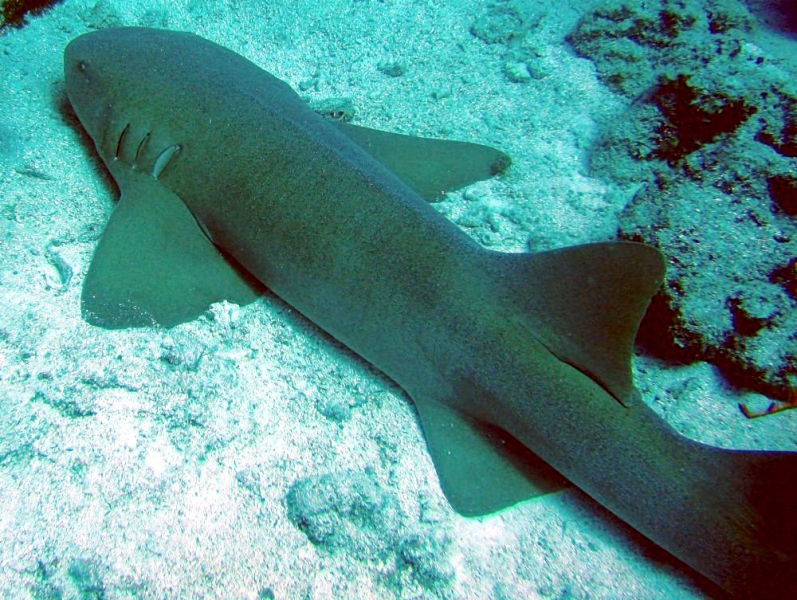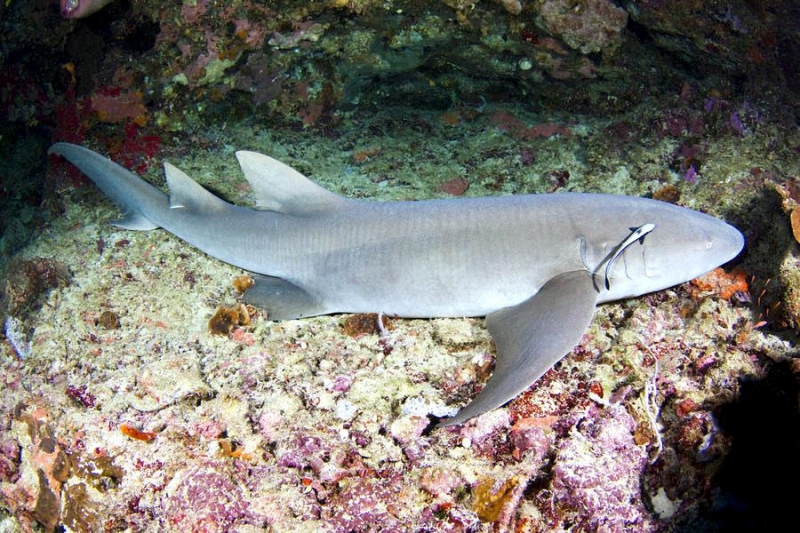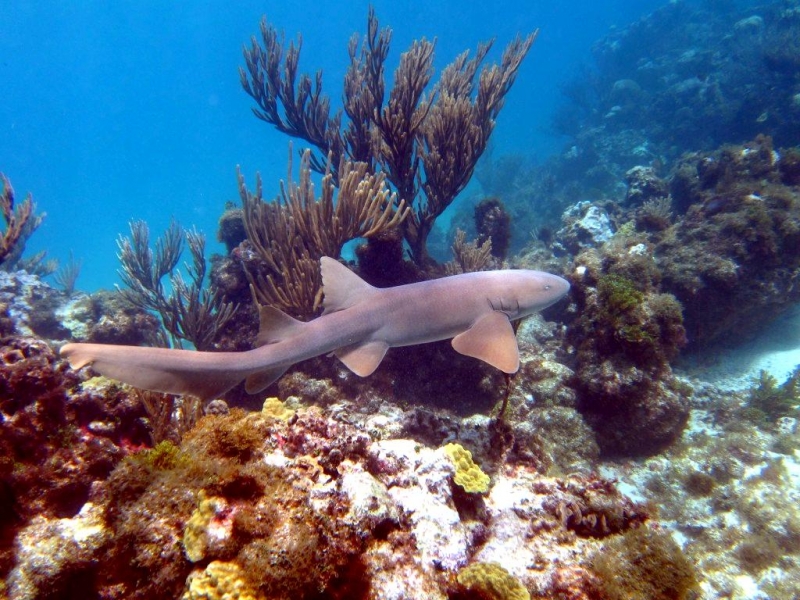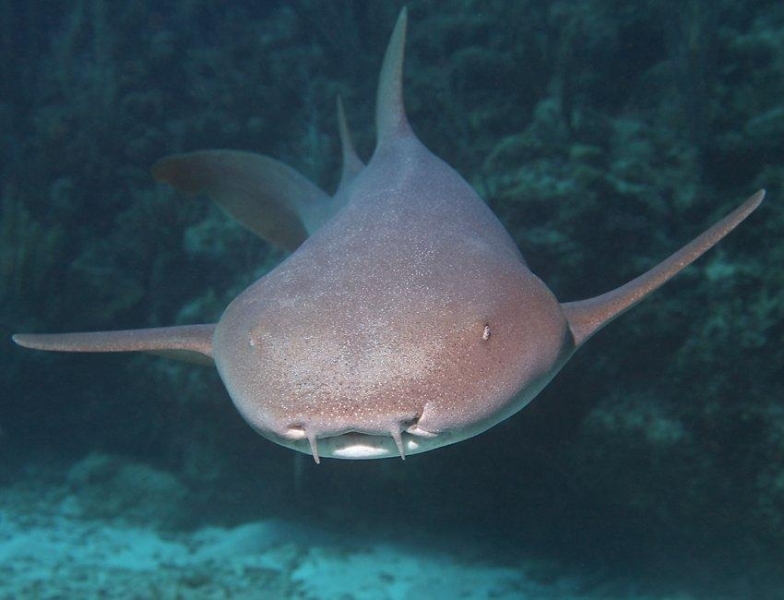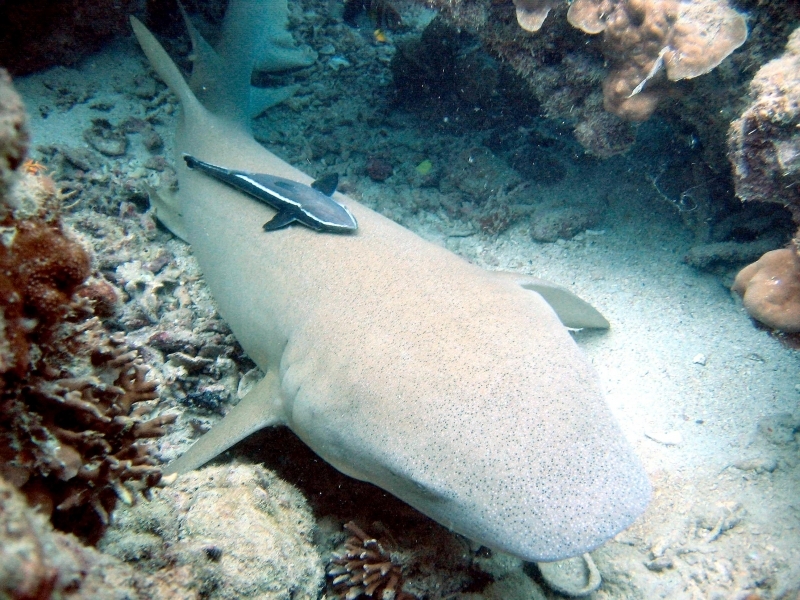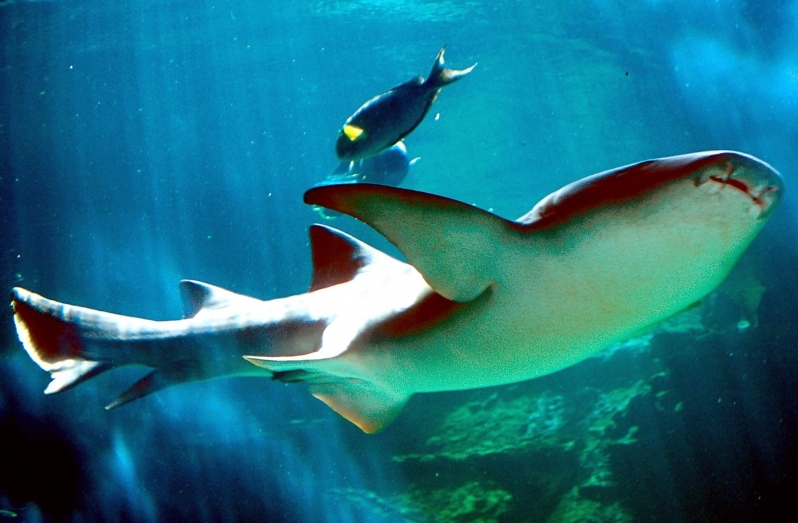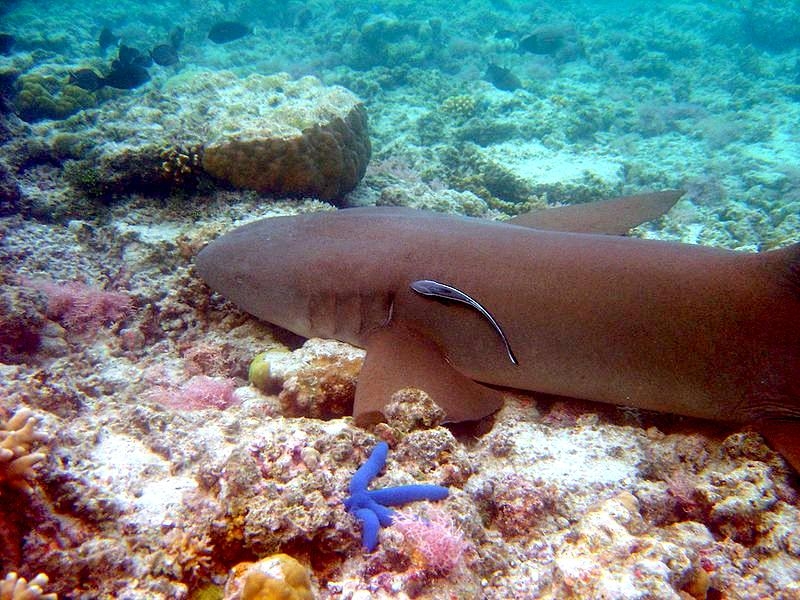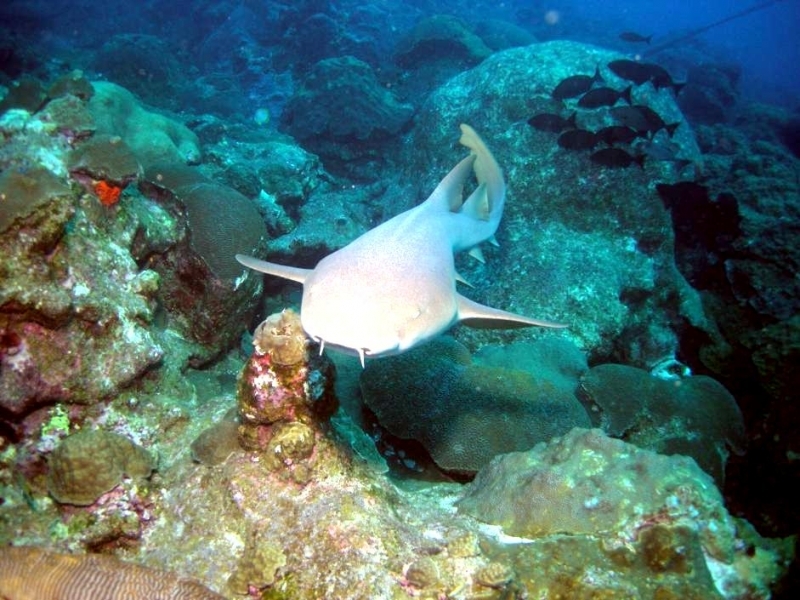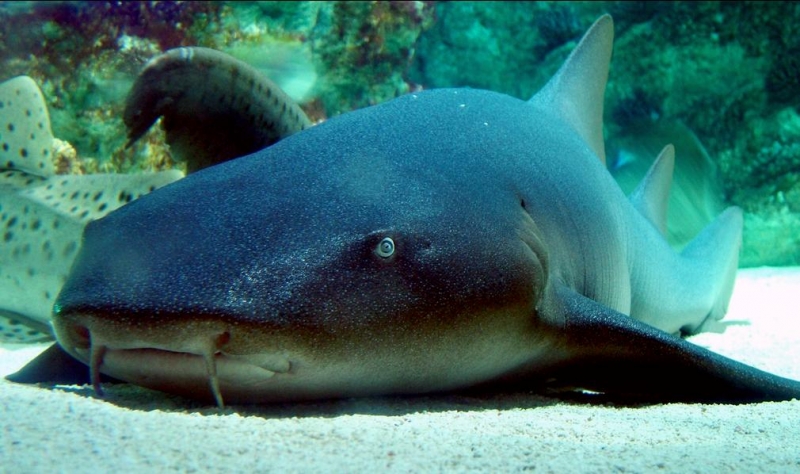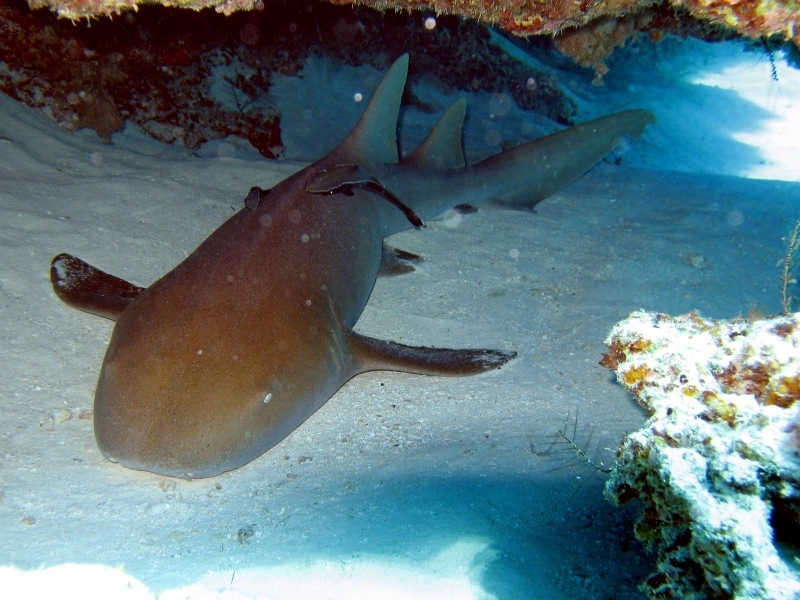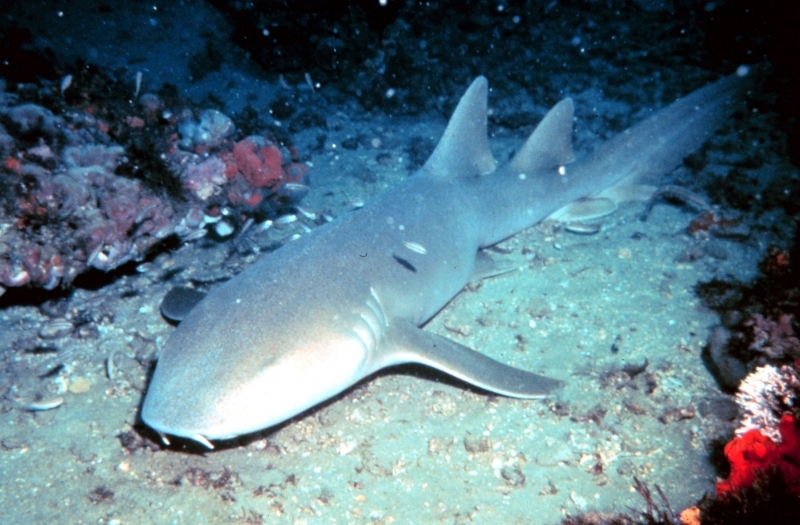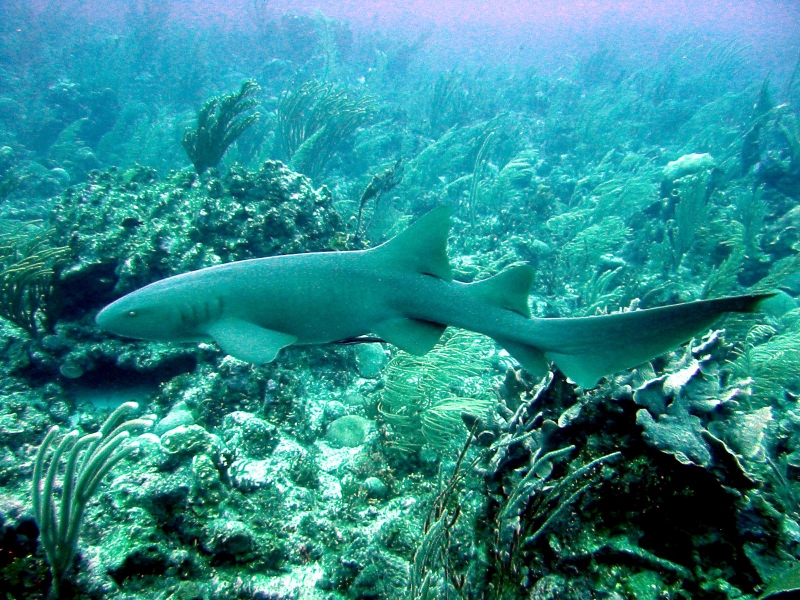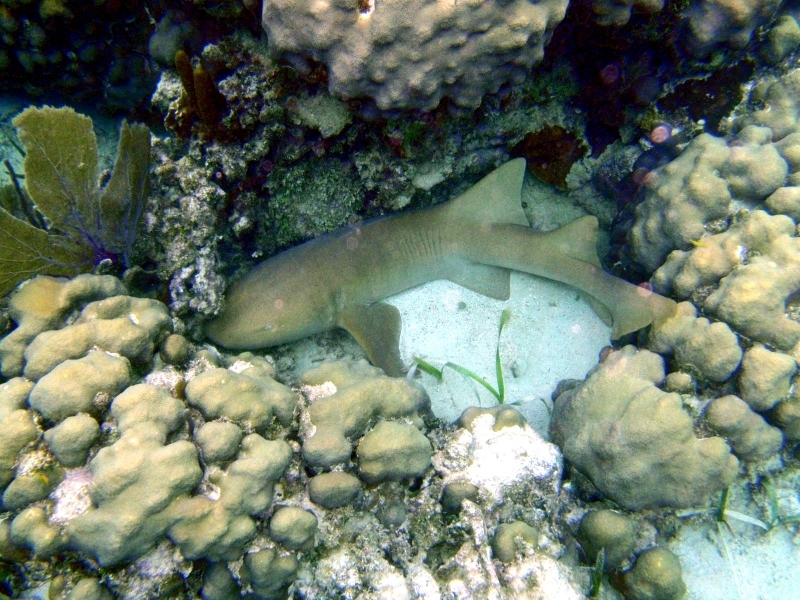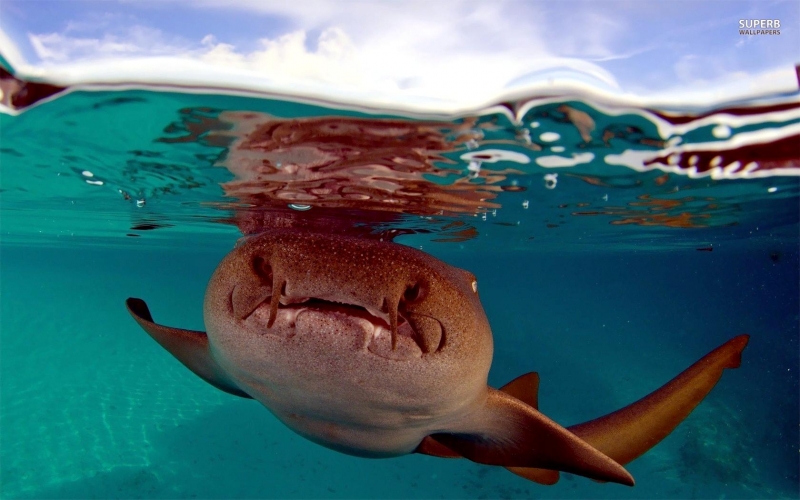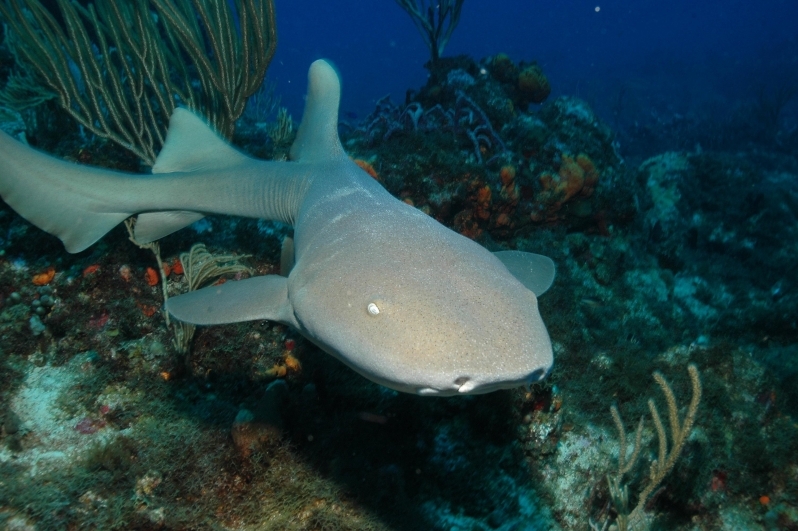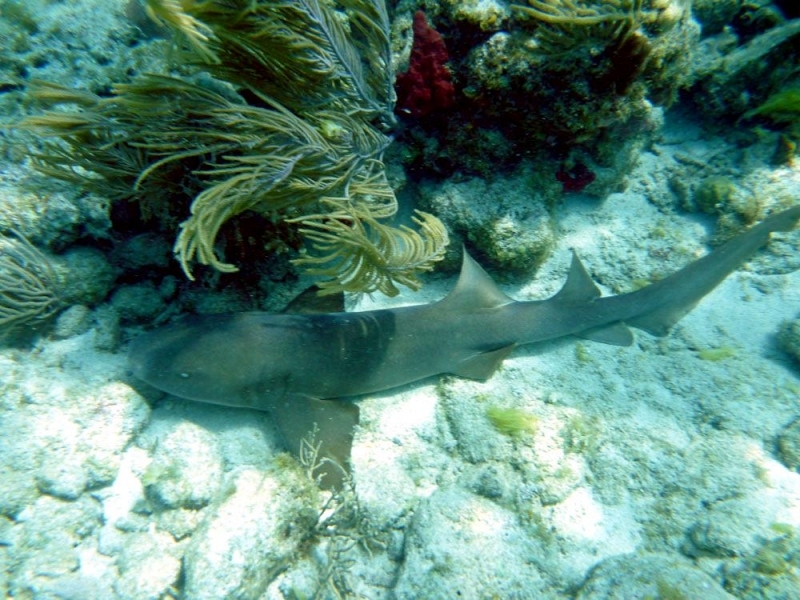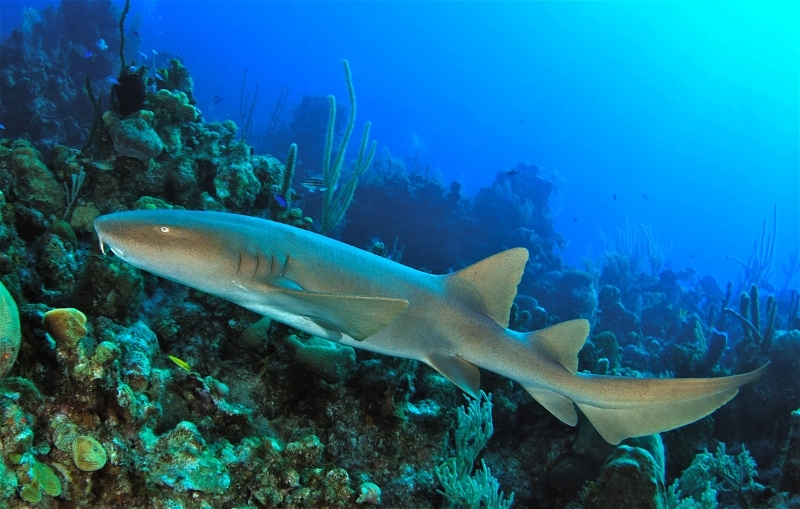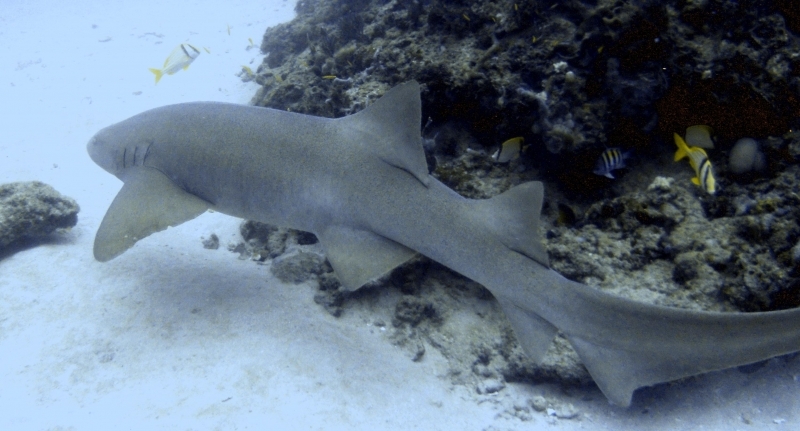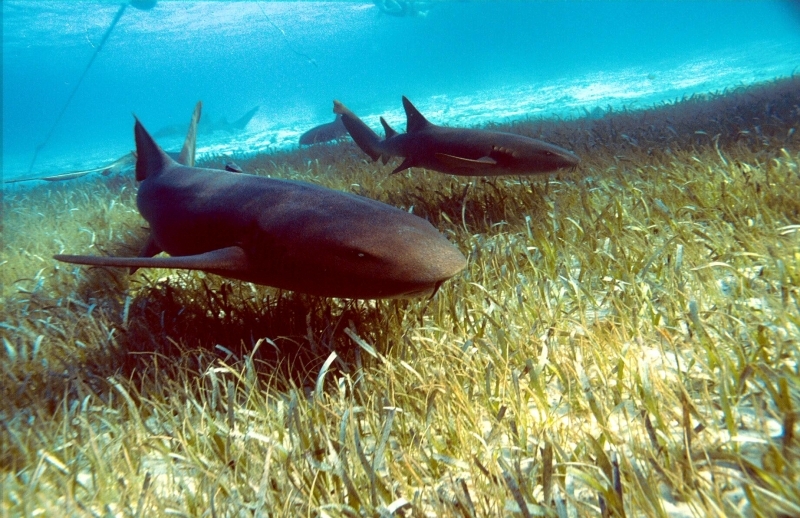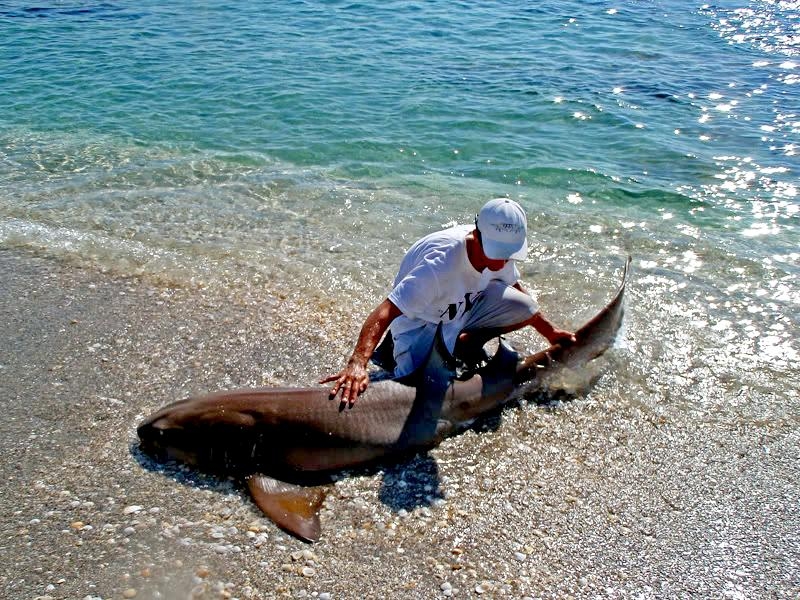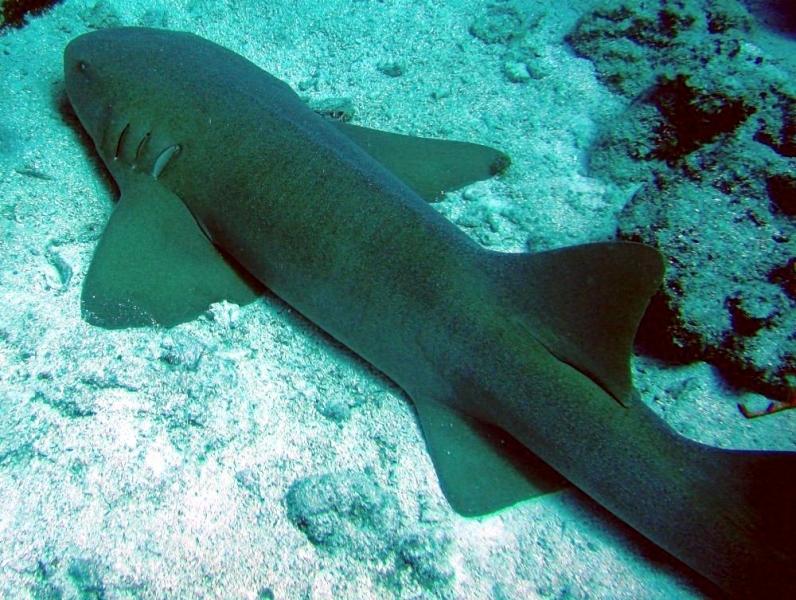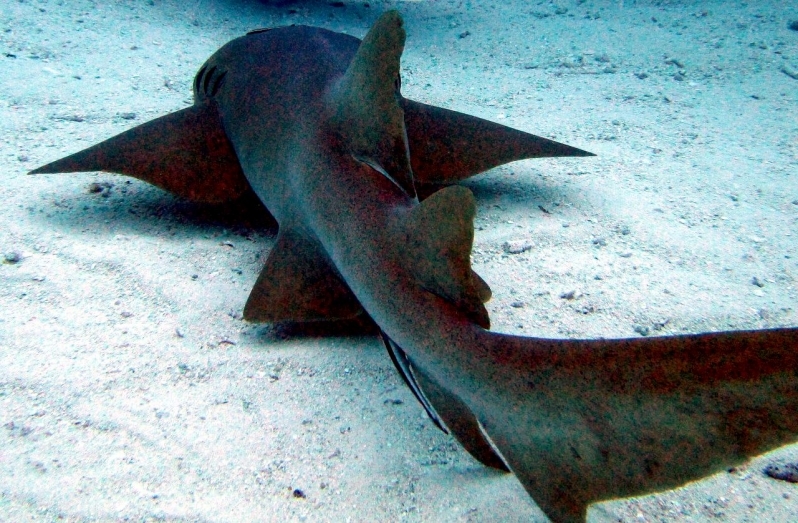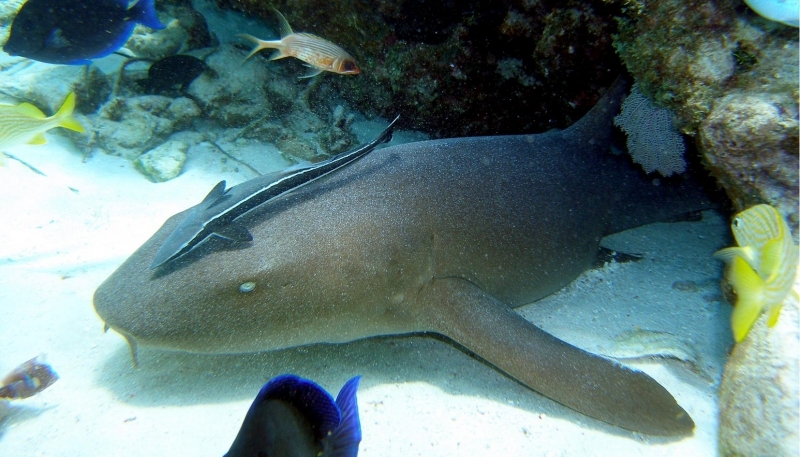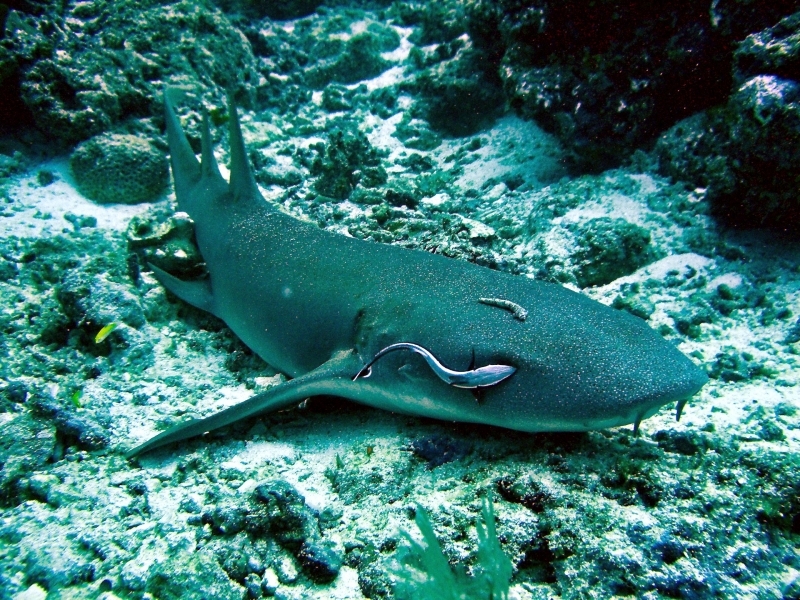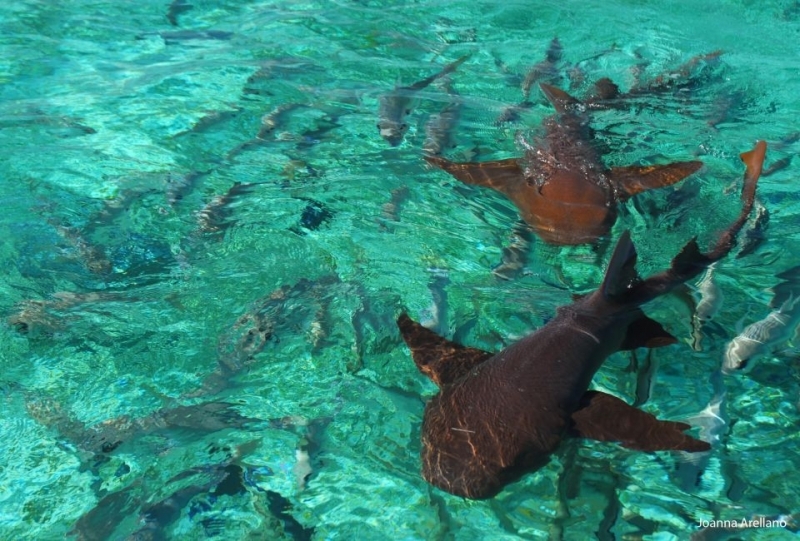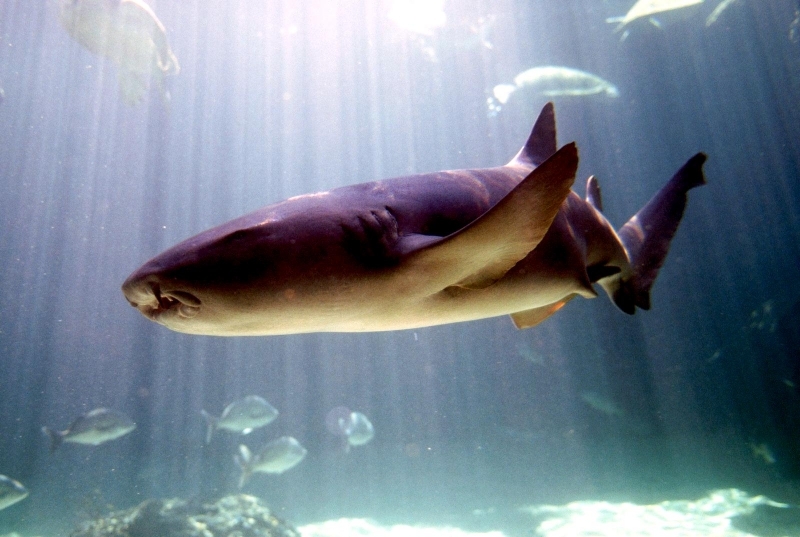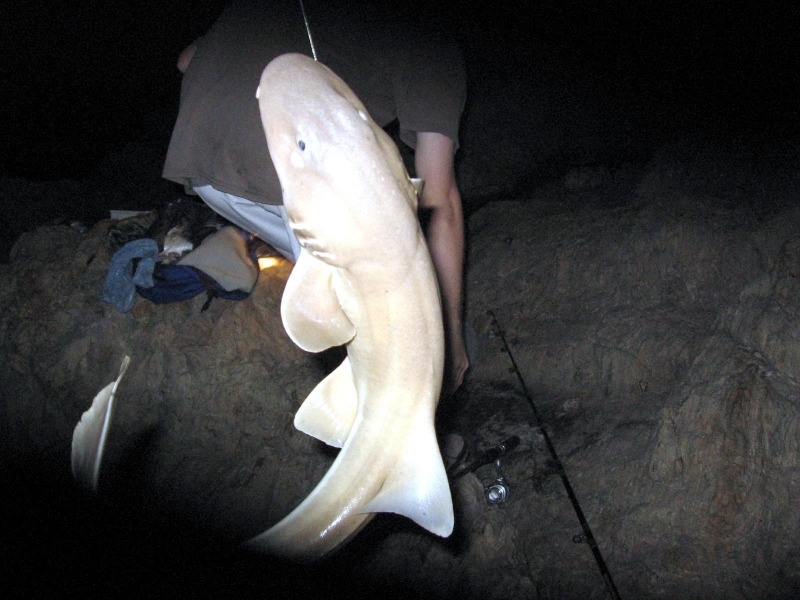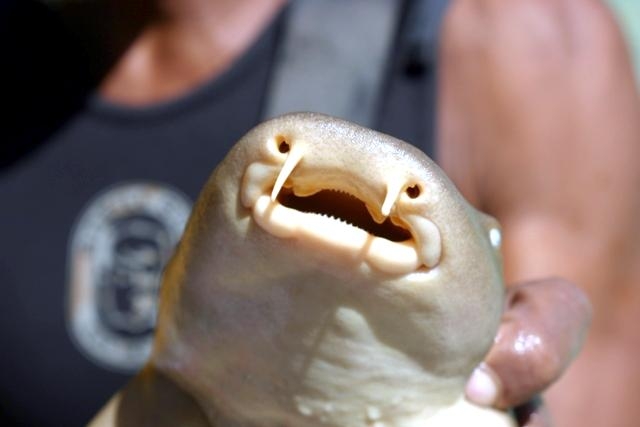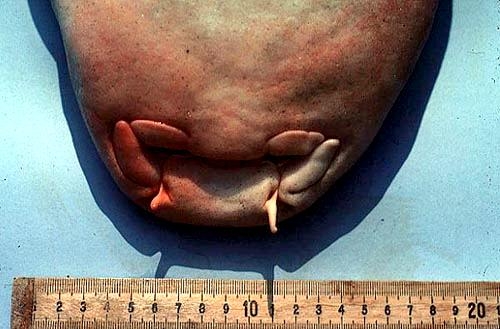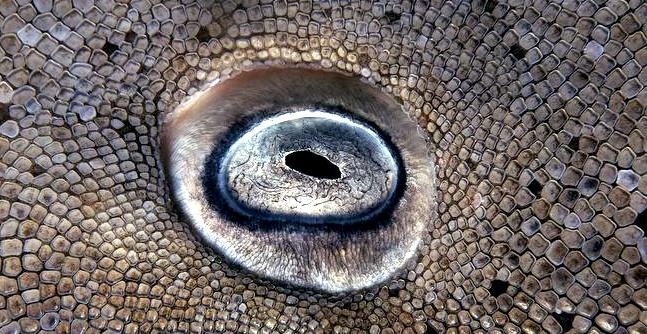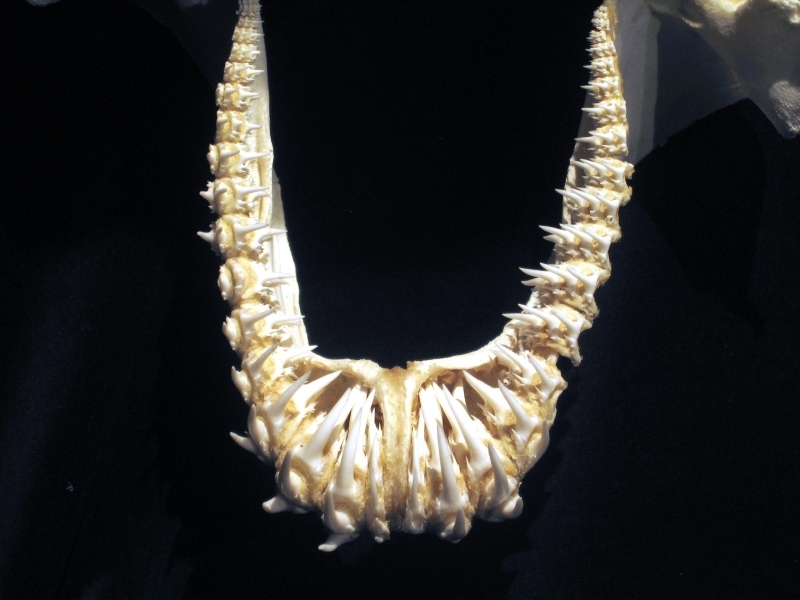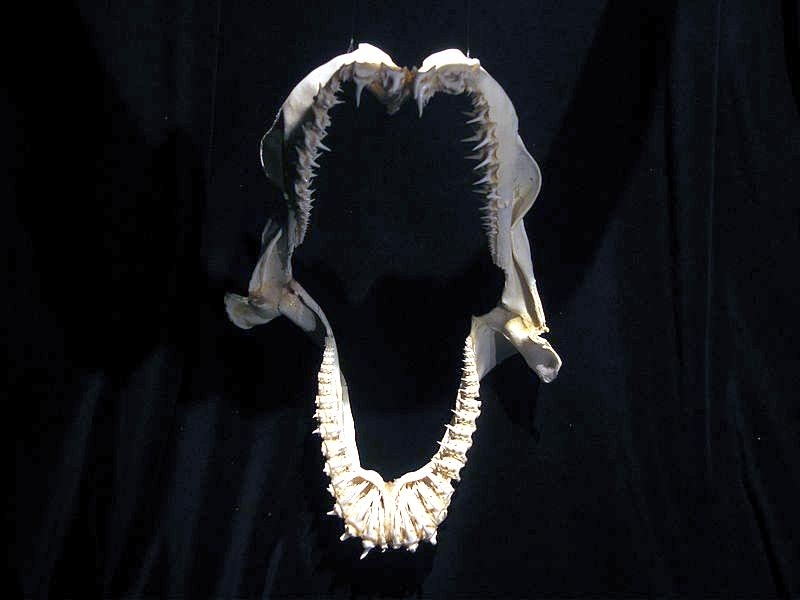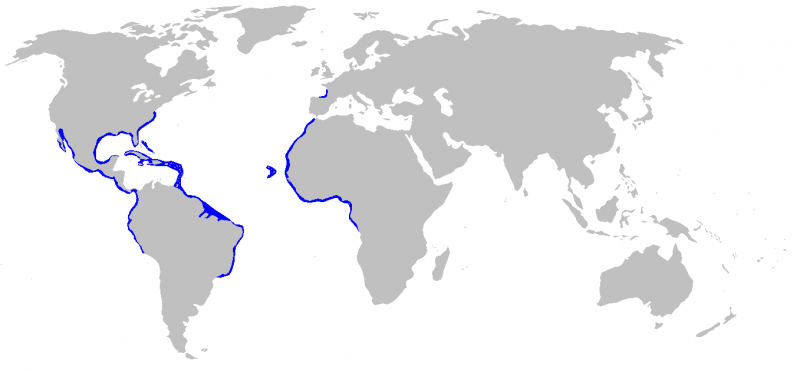“Ginglymostoma cirratum”
Nurse Sharks reach a maximum of 4.3 meters total length; maximum weight is 110 kilograms. The Nurse Shark is a common reef-associated bottom-dwelling shark found in brackish and marine environments in the shallows to 100 meters. The origin of the name Nurse Shark is unclear. It may come from the sucking sound they make when hunting for prey in the sand, which vaguely resembles that of a nursing baby or it may derive from an archaic word nusse, meaning cat shark. The most likely theory though is that the name comes from the Old English word hurse meaning sea-floor shark. It has moderately long barbels between the nostrils, nasoral (near the nostrils) grooves are present, the mouth is well in front of the eyes, small spiracles, the precaudal tail is shorter than the head and body, the dorsal fins are broadly rounded (the first much larger than the second and anal fins), caudal fin moderately long, over 1/4 of total body length, yellow-brown to gray-brown in color, with or without small dark spots and obscure dorsal saddle markings. Nurse Sharks are commonly found over shallow sand flats, in channels and around coral reefs while the young pups may be found among prop roots of red mangroves. Nurse Sharks show a strong preference for certain resting sites and repeatedly return to the same caves and crevices following nocturnal activity. Nurse Sharks are nocturnal, feeding on bottom invertebrates such as spiny lobsters, shrimp, crabs, sea urchins, squid, octopus, snails & fishes such as mullet, puffers and stingrays.
Nurse Sharks are ovoviviparous that give birth to 21-28 pups in a litter. Young in the uterus are sustained by a large supply of yolk. Females give birth in late spring and summer in waters off Florida. During courtship, a pair (sometimes a trio) of adults were observed engaged in synchronized parallel swimming. A male may grab one of the female’s pectoral fins with his mouth which induces the female to pivot 90° and roll on her back on the bottom. Then the male inserts a clasper in her vent and then rolls on his back beside the female. The eggs are retained within the body of the female in a brood chamber where the embryo develops, receiving nourishment from a yolk sac. This is the method of reproduction for the “live-bearing” fishes where pups hatch from egg capsules inside the mother’s uterus and are born soon afterward. Nurse Sharks are non-aggressive and will generally swim away when approached; they are one of the most docile animals in the sea. However, some unprovoked attacks on swimmers and divers have been reported. If disturbed, the bite is powerful and capable of inflicting serious injury. In some instances, jaw release was accomplished only after using surgical instruments. It is not true that all sharks need to swim in order to breathe and when they cannot for whatever reason, they die. All sharks breathe primarily by using a ram-jet ventilation system used while they are swimming. Some sharks however, have a second system based on respiratory pumping of water. Nurse Sharks can switch to this respiratory system when they are at rest, saving energy and the necessity to swim to move water & oxygen over their gills. This dual respiratory system is especially important for bottom dwellers such as Nurse Sharks.














